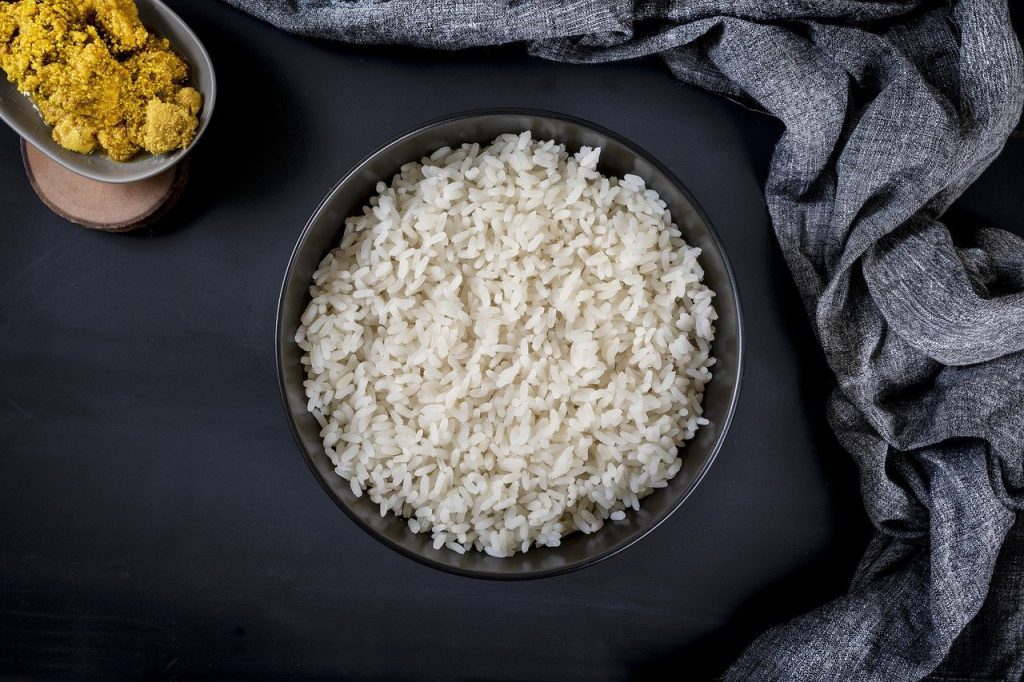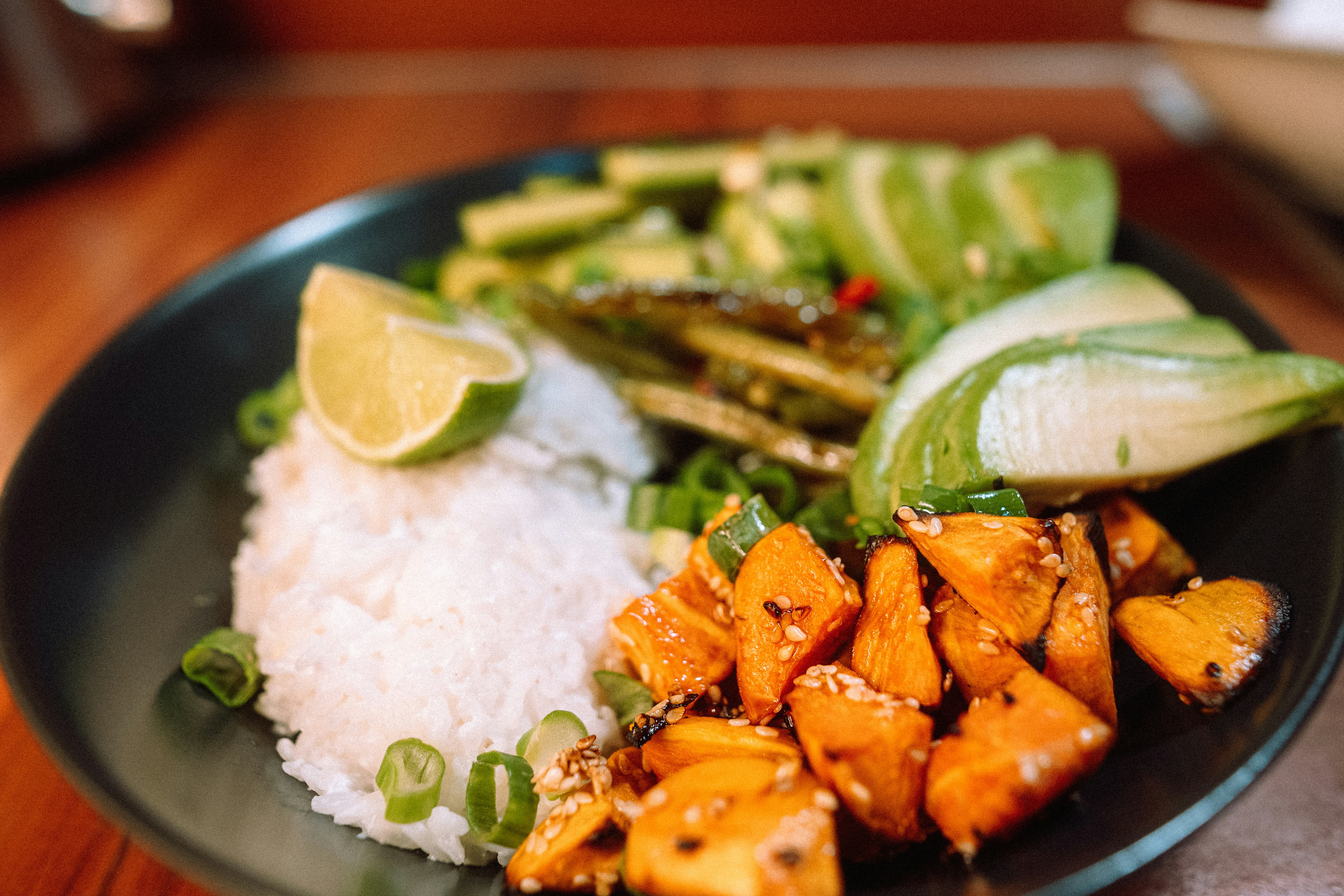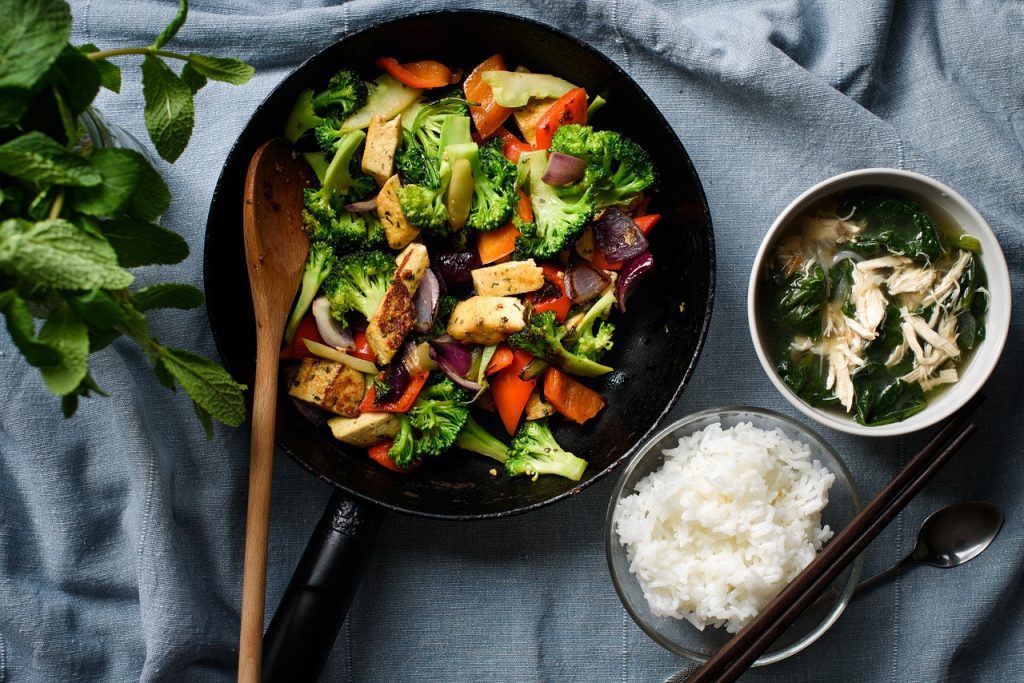Learn about Health Benefits of Coconut Rice. Discover the deliciousness of coconut rice, a creamy dish made with coconut milk. Learn about its origins, health benefits, and how to prepare this versatile favorite from various cuisines.
Introduction
‘Coconut rice‘ is a very rich and mildly sweet dish prepared by boiling rice in coconut milk. This dish is enjoyed worldwide, particularly in Southeast Asia, the Caribbean, and Africa where it is typically served with hot dishes that must preferably be spicy or salty. Jasmine or basmati rice is most often used but any rice type can be used for the dish. The essential components are rice, water, coconut milk, and salt, without seasoning, or maybe seasoned with spices or herbs depending on the recipe.
Coconut rice goes well with grilled meat as well as curries or seafood, thus making it convenient to use in many cuisines. It can be used as an accompaniment to provide fats from coconut milk healthily and together with carbohydrates and fiber for better health in moderation as part of an everyday diet. Because of the taste and texture enhancement that it brings to food, coconut rice is enjoyed by many civilizations.

Origins of Coconut Rice
Coconuts have been part of many cuisines for thousands of years creating coconut rice. In the southeast parts of Asia, especially Malaysia, Indonesia, and Thailand, coconut rice has acted as a complimentary item to eat with spicy sauces and barbecue meats with curries. One of the most well-known cuisines using coconut rice is Malay’s ‘nasi lemk’, which is translated as ‘fat rice’ in English. It comes with coconut rice served with spicy sambal, fried salted anchovies, boiled egg, and slices of cucumber.
This is however not the case in the Caribbean in which coconut rice is widespread of late, particularly in Jamaica and Trinidad for it is more often than not, coconut rice and beans or coconut rice and peas instead of just plain rice. Africa, particularly the coastal regions of Swahili, savors her coconut rice made with spices.
Ingredients for Coconut Rice
The simplest coconut rice recipe can already be prepared using the most basic ingredients: rice, coconut milk, water, and salt. But in certain places, some variations are done and added ingredients such as ginger, garlic, and pandan leaves, or aromatics like cinnamon and cardamom give an appealing flavor to the rice. In some recipes, dehydrated coconut or coconut milk is used for a more intense mouthfeel. The amount of water added to the coconut milk can also be altered according to individual tastes whether for a mild coconut flavor or a thick creamy appeal.
Health Benefits of Coconut Rice
1. Good Source of Healthy Fats
Coconut rice is high in MCT oil, a good type of fat that increases stamina and aids in weight control. These fats are broken down in the body differently from long-chain fats and will not be deposited in the body as fats yet provide quite a great deal of energy the reason why coconut rice is a healthy option in any meal.
2. Improves Heart Health
These healthy fats that are found in coconut rice may assist in the reduction of cholesterol and so promote healthy living. MCTS has also been shown to facilitate the normal functioning of the heart which can lower the chances of a heart attack. As mentioned above coconut rice does have its benefits, especially when taken with vegetables and proteins, with regards to heart health an increase in its consumption would not be harmful.
3. Boosts Cognitive Function
Coconut rice has in its composition MCTs which are known to enhance cognitive abilities. This class of fats offers another form of energy for the cells within the organ, which likely even facilitates enhancing the memory and lucidity of thought processes. Thus, the dietary addition of coconut rice would also help in improving attention and cognitive abilities in general.
4. Good Source of Fibre
The addition of coconut rice into the diet can be beneficial as it contains some dietary fiber especially if it is made with brown rice or cooked with vegetables. The use of fiber is important in promoting digestive health which includes ensuring regular elimination to curb incidences of constipation. Moreover, a fiber-filled intake imbibes a sense of fullness from the meals which helps in managing obesity.
5. Regulates Blood Sugar
Coconut rice falls in the low to moderate glycemic index range and therefore it can control blood sugar levels. This quality makes it a more agreeable carbohydrate source for diabetics and those who are insulin-resistant. The inclusion of coconut rice in these meals affords no energy peaks that would usually come with sharp blood glucose levels.
6. Boosts the Immune System
Coconut is rich in lauric acid that is antiseptic hence mother nature’s defense. Because of this ability, eating coconut rice may help to protect its consumers from diseases and aid in the maintenance of their health. The nutrients in the coconut milk can also play a role in boosting immunity, therefore the milk is a healthy addition to meals.
7. Improves Skin Health
Every ingredient present in coconut rice enhances overall skin health. By it’s healthy fats and antioxidants, coconut rice whenever taken can improve skin hydration and elasticity. Particularly coconut oil used in making coconut rice helps to enhance the appearance of the skin and to shield it from harm. As a result of continuous use, one can achieve a radiant and healthy skin.
8. Aids in Weight Loss
Coconut rice does not interfere with weight loss goals, provided it is eaten with a proper diet. In coconut, foods are added in the form of medium chain triglycerides (MCT) which help the user consume less food. Also, the fibrous component is helpful in digestion and assists in healthy eating, which is a good strategy for controlling one’s weight.
9. Gluten-Free and Dairy-Free
Gluten is absent from coconut rice and it also does not contain dairy components making it an excellent dish for those with such feeding issues or those who have restrictions. People with gluten allergies such as celiac disease can enjoy this treat without the risk of any side effects while it also serves as a delightful cream substitute to rice dishes that usually contain milk.
Ingredients Used in Coconut Rice
The basic ingredients of coconut rice include rice, coconut milk, water, and salt. Enhancements depending on different localities may also include spices, herbs, or other similar ingredients for better flavor. Some preparations will season the dish with fragrant leaves while others will incorporate toasted coconut flakes, ginger, or garlic.
How to Cook Coconut Rice
1. Choose Your Rice
To begin, decide on the type of rice you would like to use. Jasmine rice has a characteristic coconut sour widely smelling decorated aroma that most the people prefer using it for the coconut rice. Nevertheless, Basmati or long-grain rice suitable for other recipes providing different textures and tastes would also be good to use.
2. Rinse the Rice
Next, rinse the rice well with cold water to get rid of excessive starch. This important step will help in making sure the rice is cooked well and does not become too soft or sticky. Rinsing tends to fluff the rice enabling each of them to be distinct which adds to the beauty of the dish.
3. Cook the Rice with Coconut Milk
In a pot or a rice cooker, prepare coconut milk, water, salt, and your preferred rice. Coconut milk serves to enrich the rice with flavor thereby making it creamy and appetizing. You could also put a little sugar to sweeten or add fragrances such as pandan leaves for taste enhancement.
4. Simmer
Elevate the heat to a boil and then turn it down and allow to cook for some time. This ensures that the rice takes its time and cooks thoroughly so that all the coconut milk is absorbed into the rice making it soft and tasty. Put in enough water, and a little bit of rice to allow for expansion and cooking evenly without sticking.

5. Let It Rest
Afterward, allow a resting period of some minutes after the rice has been cooked, allowing the rice to solarize. This resting period also has the additional benefit of allowing the grains to separate enhancing the taste of the coconut rice. Put the lid on the pot allowing no steam to escape. This will allow the rice to have a very light and fluffy texture when served.
6. Fluff and Serve
Fluff gently with a fork, then separate the grains for that light, airy texture of coconut rice. This dish goes perfectly with grilled fish, curry, or fried chicken – any main course you prefer. The mild creamy flavor makes it match whatever cuisine you want to indulge in.
Popular Variations of Coconut Rice
Nasi Lemak (Malaysia)
Nasi lemak is a Malaysian staple recipe based on a plate of steamed rice in coconut milk which normally comes with sambal, hard-boiled eggs, fried peanuts, fried dried fish, and slices of cucumber. This delicious blend makes it very palatable and many go ahead to define it as Malaysia’s national cuisine which is taken during breakfast or any other time of the day.
Coconut Rice and Peas (Caribbean)
Coconut rice, in Jamaica and the other islands of the Caribbean, is usually cooked with either red kidney beans or pigeon peas. The flavor of thyme and allspice that goes into the preparation of this dish brings a great taste along. It is often served as a side dish with other Caribbean dishes, making it more enjoyable for eaters.
Kenyan Coconut Rice (Africa)
Kenyan coconut rice enriched with Swahili cuisine is served mostly with seafood and it is usually enhanced by spices such as cardamom and cinnamon. This dish serves as a tourist attraction because it incorporates culinary practices of the coastal areas of Africa and the use of spices and coconut milk.
Coconut Sticky Rice (Thailand)
In Thailand, the use of coconut rice is steered towards dessert by incorporating glue-like rice into sweetened coconut milk. It is a gooey dessert that is often eaten with fresh sliced mangoes and is loved due to its rich creaminess and bold flavors, both of which are appealing to both locals and foreigners.
Culinary Uses
Coconut rice serves as a versatile base for various dishes. It pairs well with:
- Curries: This rich creamy coconut rice strikes out the hotness of the spicy curries. Hence, it is widely used in both Thai and Indian cuisine.
- Grilled Meats: Coconut rice is used with grilled or barbecued meat. The strong, creamy profile will uplift the flavor coming from grilled or barbecued meat.
- Vegetarian Dishes: Most importantly, Vegetable stir-fries or curries are not left behind for side service in a satisfying meal to vegetarians and vegans.
FAQs
Are there any health benefits to coconut rice?
Definitely! It includes all the healthy fats derived from coconut milk, making it energy-giving as well as enhancing the health of one’s heart. Additionally, it contains some dietary fiber which aids in the process of digestion and it can also help balance sugar levels within the blood.
What types of rice can I use for coconut rice?
Yes, coconut rice is gluten-free. It is because it is prepared with rice and coconut milk, which are naturally free from gluten. Nonetheless, do not forget to check all the additives regarding gluten.
Is coconut rice gluten-free?
Yes, coconut rice is gluten-free as it is made from rice and coconut milk, both of which do not contain gluten. Always check the labels of additional ingredients for gluten content.
Can coconut rice be made vegan?
For sure! Coconut rice is vegan by default, as it brings in coconut milk instead of regular dairy. Just make sure any other ingredients used like sweeteners or toppings are plant-based as well for the dish to be entirely vegan.
Conclusion
Coconut rice is such a great dish that brings out much coconut milk, therefore making it the best accompaniment to most cuisines. Its creaminess and aroma give it a space in various cuisines the world over. Even with just a coconut rice portion as a main or side meal, it is appetizing and gives your meal a sunny tropical flavor.
